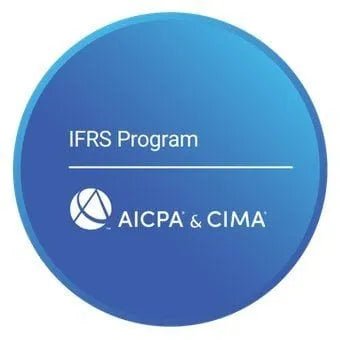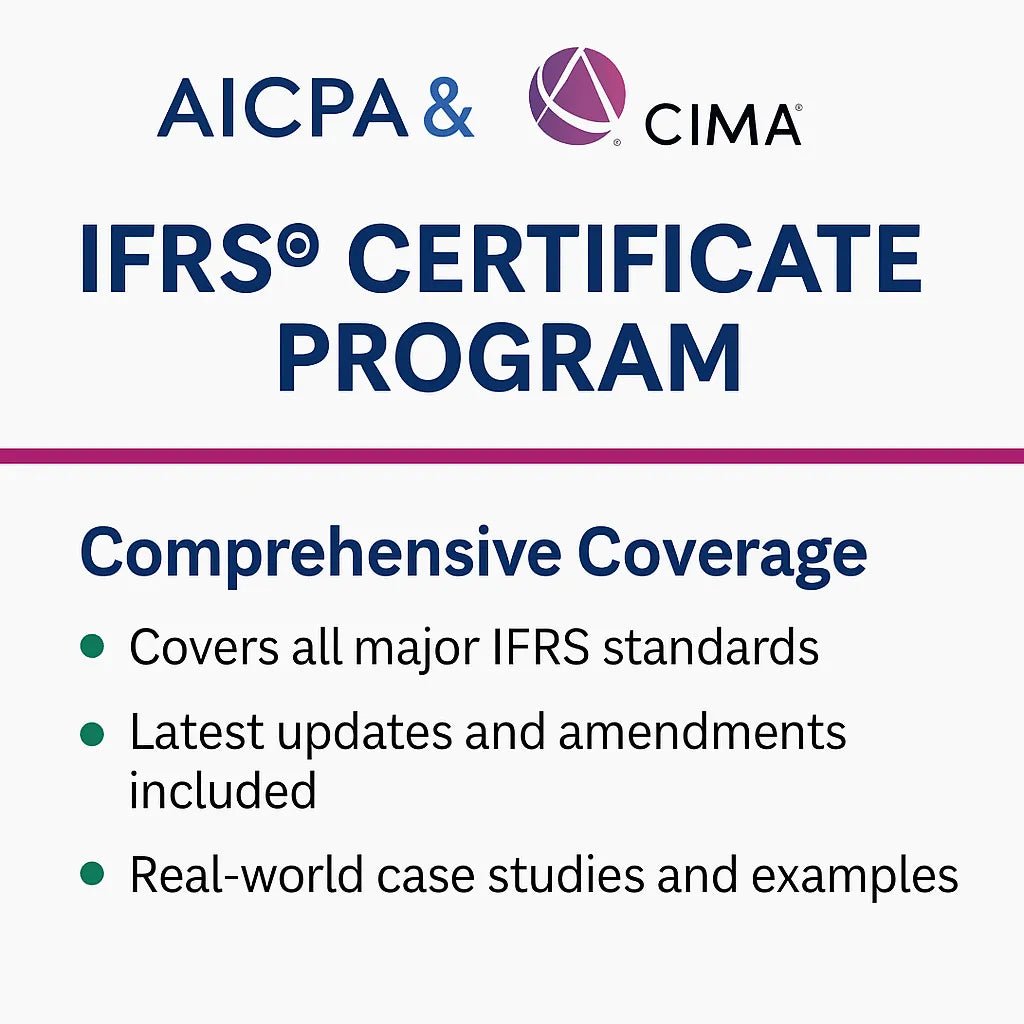IFRS Sustainability Standards SBR Exam Guide
IFRS Sustainability Disclosure Standards: Your Complete SBR Exam Guide
The December 2024 examiner's report delivered a stark warning: "Disappointing answers were given for this question. Many candidates just described materiality in accordance with IFRS Sustainability Disclosure Standards... there was a lack of preparation for this topic, even though a technical article had been published."
Don't let sustainability disclosures catch you unprepared. Here's everything you need to know for SBR success.
Why This Topic on IFRS Sustainability Standards SBR Exam Guide Matters Now
IFRS S1 (General Requirements) and IFRS S2 (Climate-related Disclosures) became examinable in SBR from September 2024. The March/June 2025 examiner's report makes clear this isn't optional knowledge: "These new standards will continue to be examined."
Yet candidates are struggling. The September/December 2024 report noted: "There were blank answers and some very weak answers, suggesting that there was a lack of preparation for this topic."
The Two Standards You Must Know
IFRS S1: General Requirements
Purpose: Sets out overall requirements for sustainability-related financial disclosures
Four Core Content Areas:
- Governance - How the entity oversees sustainability risks/opportunities
- Strategy - How sustainability issues affect business strategy
- Risk Management - Processes to identify and manage sustainability risks
- Metrics and Targets - How performance is measured
IFRS S2: Climate-related Disclosures
Purpose: Specific requirements for climate-related disclosures
Key Requirements:
- Physical risks (floods, droughts, extreme weather)
- Transition risks (policy changes, technology shifts, market changes)
- Climate-related opportunities
- Greenhouse gas (GHG) emissions disclosures
The Materiality Trap That Catches Students
The September/December 2024 examiner noted: "Well-prepared candidates who had read the comparison between the two sets of standards within the Examinable Documents were able to describe the 'double materiality' concept in ESRS and scored full marks."
IFRS vs ESRS Materiality
IFRS Sustainability Standards (Single Materiality):
- Focus on financial materiality
- "Could reasonably be expected to affect enterprise value"
- Investor-focused perspective
European Sustainability Reporting Standards (Double Materiality):
- Financial materiality + Impact materiality
- Considers company's impact on environment/society
- Broader stakeholder perspective
SBR Exam Tip: Questions may ask you to compare these approaches or explain why certain disclosures are required under one but not the other.
Common Exam Scenarios and How to Handle Them
Scenario 1: Compliance Assessment
You're given a company's sustainability report and asked to assess compliance with IFRS S1/S2.
Examiner's Approach (September/December 2024): "Candidates who attempted the question in a logical fashion, taking each paragraph in turn and discussing why it was compliant or not scored the most marks."
Your Method:
- Work through each disclosure systematically
- Reference specific IFRS S1/S2 requirements
- Don't just state "non-compliant" - explain why
- Consider both what's missing AND what's incorrect
Example Analysis:
Issue: Report covers only 11-month period
Standard: IFRS S1 requires same reporting period as financial statements
Conclusion: Non-compliant - creates inconsistency with annual financial statements
Impact: Users cannot properly assess sustainability performance alongside financial performance
Scenario 2: GHG Emissions Disclosure
IFRS S2 requires disclosure of Scope 1, 2, and 3 emissions.
Key Knowledge:
- Scope 1: Direct emissions from owned/controlled sources
- Scope 2: Indirect emissions from purchased energy
- Scope 3: Other indirect emissions in value chain
SBR Application: Look for incomplete scope coverage, incorrect classification, or missing gross vs. net disclosure distinctions.
Scenario 3: Risk Classification Errors
Companies often misclassify or incompletely disclose climate risks.
Physical Risks Examples:
- Extreme weather events
- Sea level rise
- Temperature changes
- Water scarcity
Transition Risks Examples:
- Policy/legal changes
- Technology disruption
- Market shifts
- Reputation risks
Examiner Insight: "A basic answer would state that disclosure of physical risks only was not enough. A more developed answer would then discuss the importance of transition risk."
Climate Change Impact on Financial Statements
The September/December 2024 exam tested how climate matters affect financial reporting:
Financial Assets Impact
Scenario: Loans to suppliers affected by wildfires/flooding Analysis Required:
- Increased credit risk exposure
- Expected credit losses under IFRS 9
- Impairment assessment considerations
Deferred Tax Assets
Climate Connection:
- Future profitability affected by climate transition
- Recovery of tax losses may be impacted
- Recognition criteria under IAS 12 may not be met
Examiner Note: "Most candidates highlighted that the financial assets would have been measured at amortised cost and discussed how climate factors increased the exposure to credit losses."
Professional Marks Strategy
The September/December 2024 report allocated professional marks "for the clarity of the answer and for the specific use of the IFRS Sustainability Disclosure Standards."
How to Earn Them:
- Structure clearly - Use headings for each issue
- Reference standards specifically - Don't just mention "IFRS S2," cite specific paragraphs when possible
- Develop your points - Move beyond identification to explanation
- Use technical terminology correctly
Example of Well-Developed Point:
"The disclosure of only physical climate risks is insufficient under IFRS S2. The standard requires disclosure of both physical and transition risks because transition risks - such as policy changes towards carbon neutrality - can have significant financial implications over the short, medium and long term. Without transition risk disclosure, investors cannot fully assess the entity's climate-related financial exposures."
Industry-Specific Considerations
IFRS S2 Industry Guidance
The standards include industry-specific metrics. For example:
- Hotels: Water consumption per occupied room
- Airlines: Fleet fuel efficiency
- Banks: Climate-related credit risk exposure
Application Tips:
- Consider the company's industry when assessing disclosure completeness
- Look for missing industry-relevant metrics
- Assess whether generic disclosures miss sector-specific risks
Time Management for Sustainability Questions
Based on examiner feedback, these questions typically carry:
- 10-12 marks for compliance assessment
- 2 professional marks
Recommended approach:
- 5 minutes: Read and plan systematic review
- 15 minutes: Work through each disclosure issue
- 5 minutes: Develop key points for professional marks
- Total: 25 minutes for full question
Red Flags to Watch For
1. Incomplete Time Horizons
IFRS S2 requires short, medium, and long-term risk assessment. One-dimensional analysis loses marks.
2. Missing Comparative Information
Like financial statements, sustainability disclosures need comparative figures.
3. Governance Gaps
Look for missing information about board oversight, management processes, and monitoring mechanisms.
4. Metrics Without Context
Numbers alone aren't enough - disclosures need targets, benchmarks, and progress indicators.
Current Developments to Know
UK Endorsement
The UK is developing UK Sustainability Reporting Standards (UK SRS) based on IFRS S1/S2. Expected consultation in Q1 2025.
EU Relationship
IFRS standards are designed as a "global baseline" that can work alongside regional requirements like European Sustainability Reporting Standards (ESRS).
SASB Standards Integration
The Sustainability Accounting Standards Board (SASB) industry standards provide detailed guidance for applying IFRS S1.
Professional Resources for Sustainability Standards Mastery
Understanding IFRS sustainability disclosure requirements demands current study materials and expert instruction. For updated ACCA books, specialized sustainability modules, and SBR BPP coaching programs covering the latest IFRS S1 and S2 developments, visit Eduyush - your comprehensive source for ACCA success with cutting-edge sustainability reporting guidance.
Practice Questions to Try for IFRS Sustainability Standards SBR Exam Guide
- Compliance Review: Given a sustainability report extract, identify non-compliance with IFRS S1/S2 requirements
- Materiality Analysis: Compare how the same climate risk would be assessed under IFRS vs ESRS materiality concepts
- Financial Statement Impact: Analyze how disclosed climate risks should influence financial reporting under existing IFRS standards
- Disclosure Development: Design climate-related disclosures for a specific industry using IFRS S2 requirements
Key Takeaways for IFRS Sustainability Standards SBR Exam Guide
- Go beyond description - The examiner wants application and analysis, not regurgitation
- Structure systematically - Work through disclosures point by point
- Develop your answers - Move from identification to explanation to implication
- Connect to financial reporting - Link sustainability risks to financial statement impacts
- Know the differences - IFRS vs ESRS materiality is a frequent test area
Final Examiner Insight on IFRS Sustainability Standards SBR Exam Guide
The September/December 2024 report emphasizes: "The examining team will not be awarding many marks for candidates quoting sustainability disclosure standards in a verbatim manner. Instead, questions will be applied in nature."
Your job isn't to memorize standards - it's to apply them critically to real scenarios.
Master these principles, and sustainability disclosures become a source of marks rather than a mystery that costs youmarks.
Ready to tackle more SBR challenges? Discover why Question 3 is consistently the worst-performing section and how to fix your approach with our targeted analysis.
Other SBR Related tips
FAQs
ACCA blogs
Follow these links to help you prepare for the ACCA exams
IFRS blogs
Follow these blogs to stay updated on IFRS
Formats
Use these formats for day to day operations
- Account closure format
- Insurance claim letter format
- Transfer certification application format
- Resignation acceptance letter format
- School leaving certificate format
- Letter of experience insurance
- Insurance cancellation letter format
- format for Thank you email after an interview
- application for teaching job
- ACCA PER examples
- Leave application for office
- Marketing manager cover letter
- Nursing job cover letter
- Leave letter to class teacher
- leave letter in hindi for fever
- Leave letter for stomach pain
- Leave application in hindi
- Relieving letter format
Interview questions
Link for blogs for various interview questions with answers
- Strategic interview questions
- Accounts payable interview questions
- IFRS interview questions
- CA Articleship interview questions
- AML and KYC interview questions
- Accounts receivable interview questions
- GST interview questions
- ESG Interview questions
- IFRS 17 interview questions
- Concentric Advisors interview questions
- Questions to ask at the end of an interview
- Business Analyst interview questions
- Interview outfits for women
- Why should we hire you question
leave application format
- Leave application for office
- Leave application for school
- Leave application for sick leave
- Leave application for marriage
- leave application for personal reasons
- Maternity leave application
- Leave application for sister marriage
- Casual leave application
- Leave application for 2 days
- Leave application for urgent work
- Application for sick leave to school
- One day leave application
- Half day leave application
- Leave application for fever
- Privilege leave
- Leave letter to school due to stomach pain
- How to write leave letter
Insurance blogs
- Sample letter of appeal for reconsideration of insurance claims
- How to increase insurance agent productivity
- UAE unemployment insurance
- Insurance cancellation letter
- Insurance claim letter format
- Insured closing letter formats
- ACORD cancellation form
- Provision for insurance claim
- Cricket insurance claim
- Insurance to protect lawsuits for business owners
- Certificate holder insurance
- does homeowners insurance cover mold
- sample letter asking for homeowner right to repair for insurance
- Does homeowners insurance cover roof leaks













Leave a comment